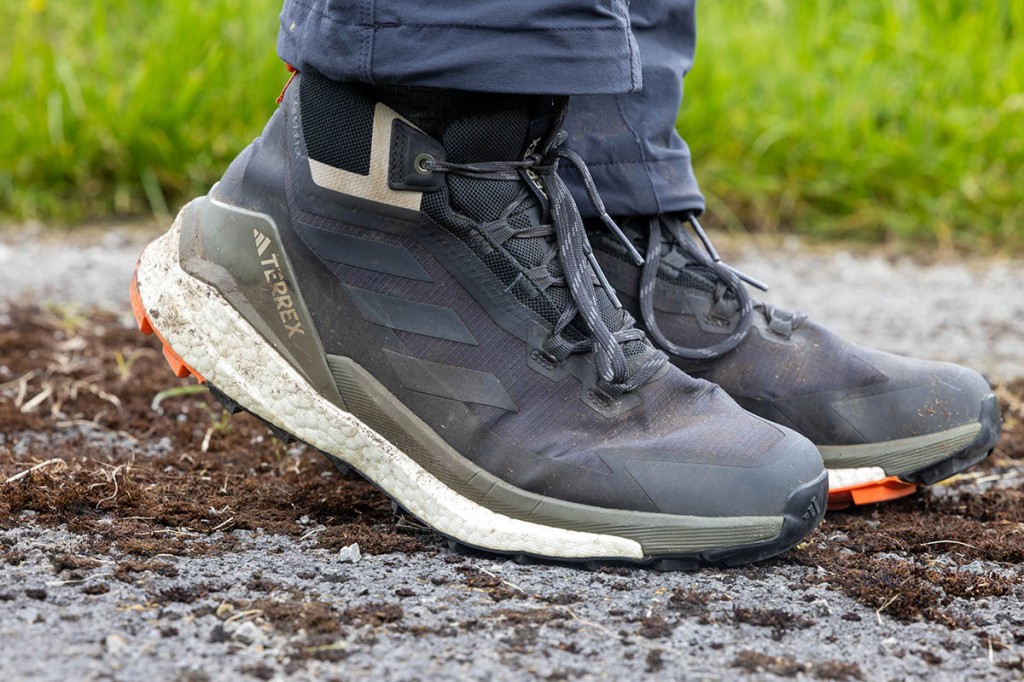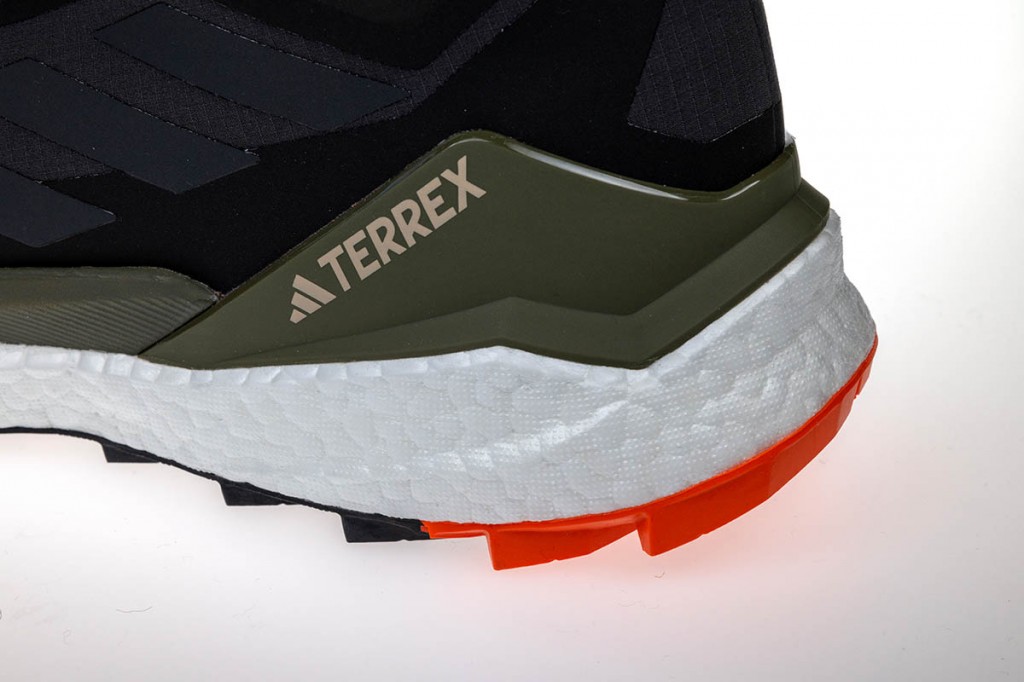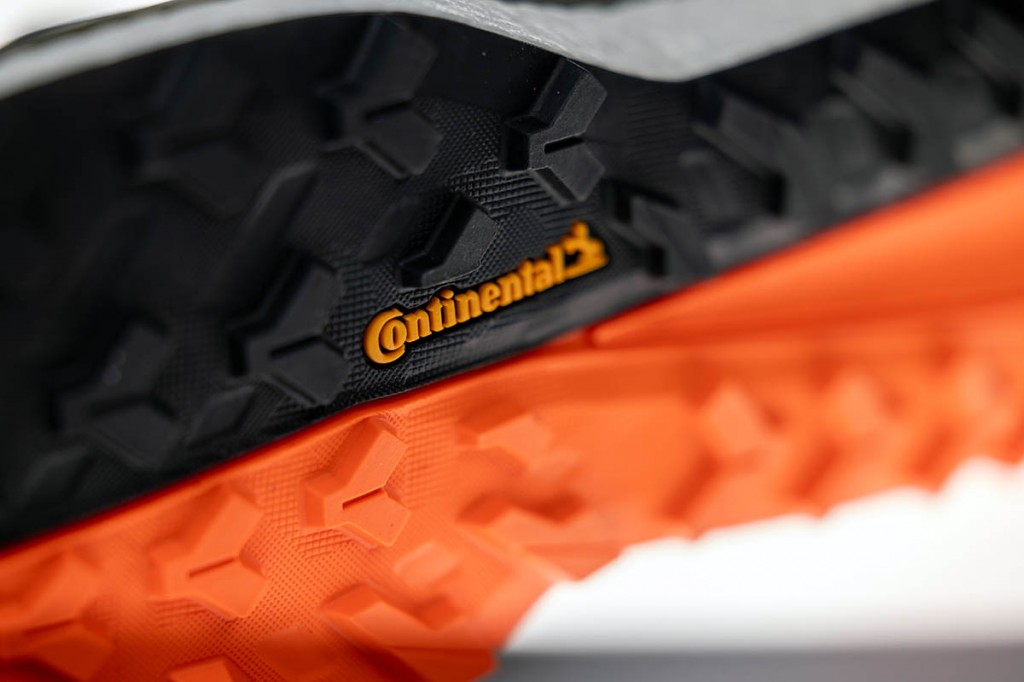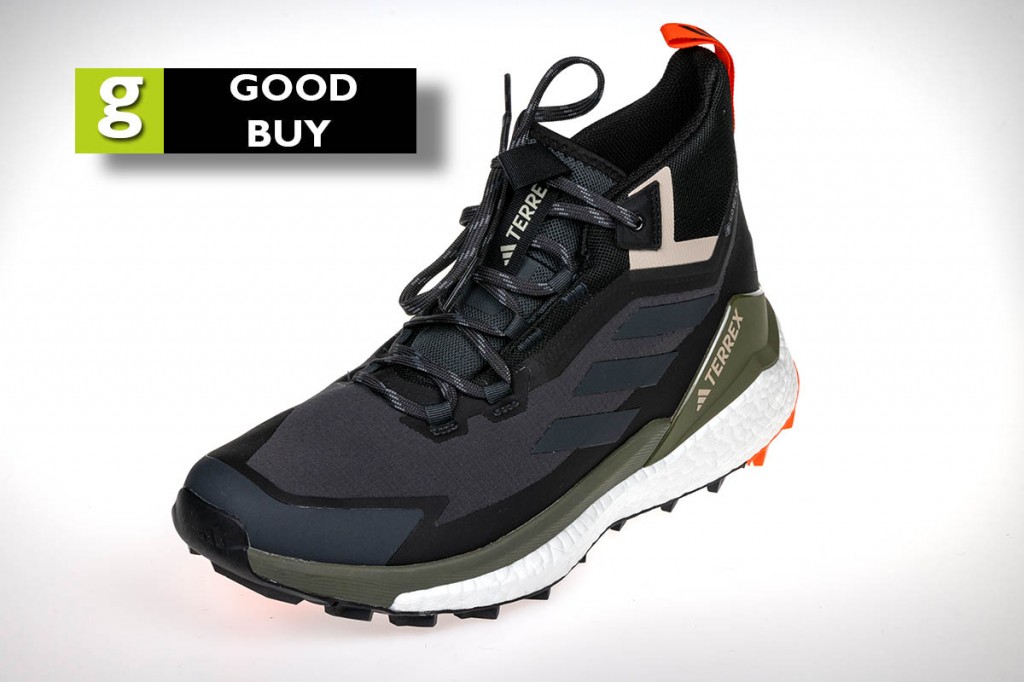Price: £180
Weight: 966g/pair
Country of manufacture: China
Sizes: 5½-14½
Colour: grey/black
Uppers: synthetic mesh and overlays
Waterproofing: Gore-Tex
Sole stiffness: 5/10
These lightweight boots from Terrex tip the scales at less than a kilo a pair, and have flexible uppers and well cushioned soles.
The uppers are very pliable and caused no discomfort. There’s a small outsole extension at the toe and a semi-stiffened, overlaid section to help protect against knocks. The heel counter is stiffened and held the foot in place well.
The forefoot has quite high volume and is wide. I have a fairly low-volume forefoot, so there was some flexing in the material, but this didn’t press into my foot. The overall shape of the boot fitted my foot well. I found that lacing the boots fairly tightly at the front section stopped my foot slipping forward towards the toe box. There was no heel lift. The flat-section laces locked in place well using the four webbing loops and the top metal eyelets. The tongue bellows come up nearly to the top of the boot, which helped keep out water.
The ankle collar has moderate foam padding, as does the tongue, which has a webbing loop to help pull it on. There’s a similar loop at the top of the heel section too.
The Free Hiker 2.0 has a Gore-Tex membrane for waterproofing and the boots kept my feet dry on numerous outings during a particularly rainy period. As with all fabric boots, there’s a cooling effect on the foot when they get wet, even though the water is kept out.
The midsole uses Adidas’s Boost technology, a closed-cell expanded thermoplastic polyurethane construction that effectively traps lots of air-filled pockets within the sole unit. Originally developed for the brand’s running shoes, it worked well for these walking boots, providing a very comfortable underfoot cushioning without sacrificing stability on more technical terrain. The outsole is a Continental unit, from the tyre brand, and has a combination of y-shaped lugs and irregular polygons at the inside edge and heel. The black-coloured section of the sole was showing some wear after extensive, regular use over more than two months.
Grip from the outsole was good, with braking and traction assured on rocky terrain.
The key aspect of these boots is comfort. The Boost sole unit and pliable uppers made the Free Hiker 2.0 very comfortable and long days on the trail were completed with no fatigue. On hard surfaces, the shock absorption was very noticeable. Adidas says the midsole has energy return, that’s to say the sole transmits back upwards some of the force used in each strike on the ground. It was developed for running and is probably more important for that activity, but on long walks, particularly on rocky terrain and gravel trails, there is a certain feeling of ‘bounce’ without loss of sensitivity to the ground. There’s a pronounced rocker shape to the sole unit too, which helped maintain a good gait while pushing the pace.
And it’s on maintained trails and footpaths that the Terrex boots felt most at home, though they coped well with boggy, muddy and wet moorland and more technical terrain, though I wouldn’t class them as a mountain boot as the uppers don’t provide enough protection against knocks on rock routes.
The design is fairly subdued, so the Free Hiker 2.0 didn’t feel out of place in urban settings.
The uppers have a minimum of 50 per cent recycled material. Adidas says it’s replacing new polyester in its products with recycled versions where possible. It uses some materials produced from feedstock rather than fossil-fuel ingredients. It says it aims to be climate neutral by 2050. By 2025 Adidas says it will have reduced its carbon footprint by an average of 15 per cent on its products, compared to 2017. Its Color With Care scheme is using new materials and methods to reduce water use and chemicals. It has signed up to the UN Fashion Industry Charter for Climate Action.
Best uses: trail walking, country walking, urban walking.
Performance 34/40
Comfort 27/30
Quality 7/10
Value for money 7/10
Sustainability 7/10
Total score: 82/100




Tp
16 June 2025I've just walked the Camino Frances 800km in a brand new pair of these addidas free hiker boots, wearing them everyday for 6 weeks... I can confirm 100% these are not in any way water proof. Even walking through lightly wet grass your feet will get wet. Don't get these boots if you want dry feet. I'll assume this is either a sponsored article or affiliated links, because the review is far from the truth.